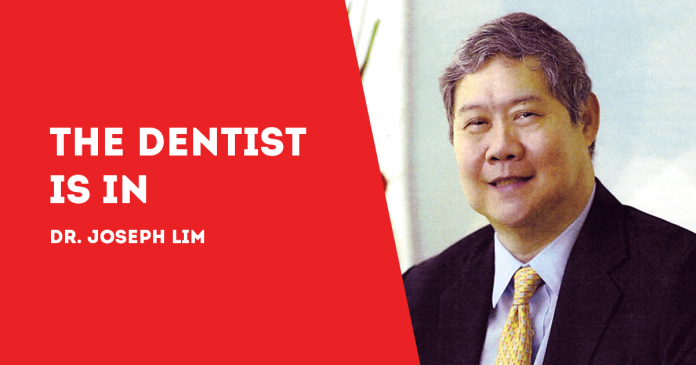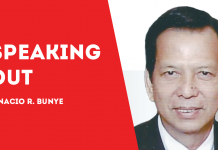
(With Dr. Kenneth Lester Lim, BS-MMG, DDM, MSc-OI)
FOR 30 years now, the rate for tooth decay, gum disease and tooth loss is 45 percent, a rate that has remained unchanged, the World Health Organization (WHO) says.
Worldwide, there are about 3.5 billion cases of oral diseases, most them preventable, it says. Then there are over 375,000 new cases of lip and oral cavity cancers each year.
Perhaps it is time to make better use of dental nurses and hygienists to help address these oral health needs, WHO says.
It says conventional dental training generally focuses on specialized dentists rather than dental nurses, therapists, hygienists and assistants.
WHO says there might just be wider roles for dental surgery assistants, also known as dental assistants, chairside assistants, or dental nurses (nonoperative). Afterall, they are one of the most common and long-established members of the dental team.
There are many members of the dental team.
Trained dental nurses, for example, prepare and maintain the clinic, including the equipment. They carry out infection prevention and control procedures to prevent physical, chemical and microbiological contamination in the surgery or laboratory.
Dental assistants, also known as dental nurses or dental chairside assistants, assist dentists and other clinician members of the oral health team to deliver dental care.
Dental hygienists work with the dentist. In the United States, for example, their roles are varied. It includes patient screening procedures; assessment of oral health conditions; review patients’ health history; oral cancer screening; head and neck inspection; dental charting; taking blood pressure and pulse taking; developing dental radiographs or x-rays; and removing calculus and plaque from all surfaces of the teeth.
Dental hygienists in America may also do preventive materials to the teeth (e.g., sealants and fluorides); teaching patients appropriate oral hygiene strategies to maintain oral health (e.g., tooth brushing, flossing and nutritional counseling); counseling patients about good nutrition and its impact on oral health; making impressions of patients’ teeth for study casts (models of teeth used by dentists to evaluate patient treatment needs); and performing documentation and office management activities.
Dental therapists, on the other hand, are licensed dental care practitioners, having attended classes alongside dentists and dental hygienists and supervised clinic practicums.
In the U.S., depending upon their education level – achieving a bachelor’s degree as a dental therapist (DT) or a master’s as an advanced dental therapist (ADT) – they can perform many dental procedures either unsupervised or supervised.
The U.S. National Maternal and Child Oral Health Center provides a list of dental therapist responsibilities: take X-rays; polish teeth; fill cavities; replace crowns; extract baby teeth; administer local anesthetic; repair dental prosthetics; make mouthguards; and provide oral care advice.
Dental therapists can provide basic dental care, they can work in a dental office or provide homebound care. But they usually practice where they’re most needed, such as in underserved communities.
Nearly 61 million people in the U.S. live in what are classified dental Health Professional Shortage Area (HPSA) where people don’t have dental insurance, or feel they don’t have the money for dental care.
These could be tribal health clinics, rural health clinics, public or free health clinics, underserved schools, correctional facilities and mobile health units.
The Pew Charitable Trusts says that for decades now, dental therapists practice in more than 50 countries. (They also practice in the Philippines).
***
Dr. Joseph D. Lim is the former Associate Dean of the College of Dentistry, University of the East; former Dean, College of Dentistry, National University; Past President and Honorary Fellow of the Asian Oral Implant Academy; Honorary Fellow of the Japan College of Oral Implantologists; and Honorary Life Member of the Thai Association of Dental Implantology. For questions on dental health, e-mail jdlim2008@gmail.com or text 0917-8591515.
Dr. Kenneth Lester Lim, BS-MMG, DDM, MSc-OI, graduated Doctor of Dental Medicine, University of the Philippines College of Dentistry, Manila, 2011; Bachelor of Science in Marketing Management, De la Salle University, Manila, 2002; and Master of Science (MSc.) in Oral Implantology, Goethe University, Frankfurt, Germany, 2019. He is an Associate professor; Fellow, International Congress of Oral Implantologists; Member, American Academy of Implant Dentistry and Philippine College of Oral Implantologists. For questions on dental health, e-mail limdentalcenter@gmail.com/PN







